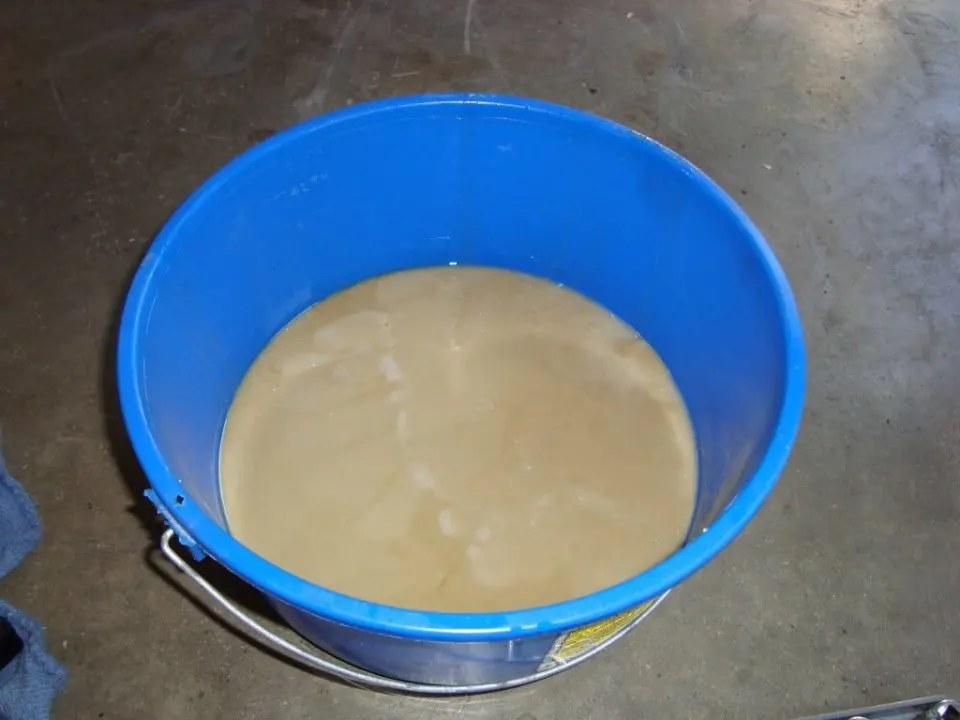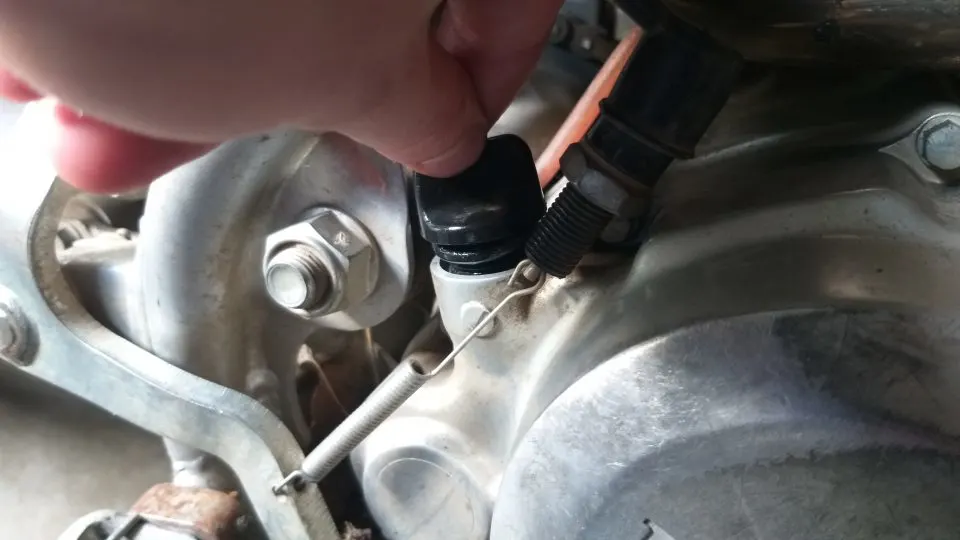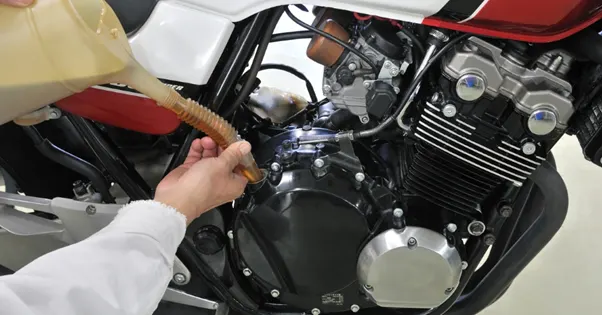Need to know what oil you should use in your dirt bike? Whether you have a 2 stroke or 4 stroke dirt bike, you're in the right place!
In this article, I'll show you why the oil you use in your dirt bike is so important, the most important factor to keeping your bike reliable, and what is the best oil for your dirt bike.
Easy to do... Easy to forget...
When you hear the word "maintenance" or "oil-change", it's easy to roll your eyes and just say: "I'll do that later." But that procrastination can be the cause of a lot more time any money out of your pocket - all because you didn't want to spend just 15 minutes to change the oil, but it's okay, it's easy to get lazy or forget.
You can either watch my video or keep reading to learn the simple truth about the oil in your dirt bike so that you can spend more time riding and less time working on your dirt bike in the long run.
Why oil in your dirt bike is so important
Think of oil as the lifeblood in your dirt bike engine. If your blood pressure was low or the blood itself was toxic (dirty), your body won't function as well and will wear out much quicker.
The same goes for your dirt bike. You need to keep the oil (blood) clean and prevent it from getting too low.

What happens if you don't change your oil regularly?
For example, let's say you're riding a 250F motocross bike with oil that has 30 hours on it and it's not even reading on the dipstick. The camshaft is rolling across tappets or buckets (another metal part), and if it loses that thin layer of oil between it, they're just going to start rubbing and scratching each other.
The camshaft is at the top of the engine, so oil needs to be pushed all the way up to reach it for lubrication and to keep the parts cool. When you run low on oil or it gets so broken down (dirty) and can't properly lubricate those parts, they're going to start wearing out much quicker.
If they completely lose oil, you can say goodbye to your engine in minutes, if not seconds because it will seize. This will cause
What oil you should use in your dirt bike - a simple answer
In today's era with so many choices for engine and transmission oil, it's easy to get caught up with choosing the "best oil" for your dirt bike. In reality, most oils are good enough for the average rider that there are more important questions to ask - especially if doing maintenance is a struggle…
Is there oil?
The number one easiest thing to check and most important when it comes to keeping your dirt bike engine running is how much oil it has.
Yet, when it comes down to it, many people forget or ignore checking the oil level often enough - even experienced riders. Failing to check your oil level could cause a catastrophic engine failure, even if you're changing oil at the proper intervals.
So, what do you need to do?
Simply check the level before each ride. Doing this will tell you how much oil it's burning, or if there's a major problem that caused the oil level to drop much faster.
This could tell you that there's a leak you didn't know about, or a new engine problem.

Enough?
Okay, so you checked and saw that there is oil on the dipstick or through the sight glass, but is it low? If it's at the minimum or below, you need to add some before riding again.
Why? Because your engine needs the right amount of oil to properly lubricate the entire engine. The top-end is the first to lose oil because it's the furthest from the crankcase (where the oil site), and it doesn't take long for metal parts to start wearing out once they lose oil.
This is especially important if you're racing or riding hard at high RPMs. The engine is spinning faster and creating more friction (heat), so low oil will cause problems even quicker.
Is it dirty?
Once you know there's oil in your dirt bike and the right amount, the next thing to be aware of is how dirty it is. The darker the color is, the dirtier it is.
For example, if the oil is completely black, then it's most likely past due for an oil change. If you see sludge when draining the oil, you know it's way past due, and it's likely happened more than once.
Dirty oil doesn't lubricate and cool as well, so it's just a higher chance of wearing out your engine faster.
What’s the best engine oil to use in a dirt bike?
The best engine oil to use in your dirt bike is what your OEM service manual recommends. You don't necessarily have to use the same brand, but the oil weight numbers should be the same, such as 10w-40.
Some dirt bike engines are a little pickier than others, while lower performance dirt bikes generally run well on anything close to what's recommended.
For example, even if Honda recommends 10w-40 for the CRF250F, using 15w-50 isn't going to hurt it. It should run just fine as well as the clutch doesn't slip.

Do I need to use motorcycle specific oil in my dirt bike?
The biggest reason why people buy only motorcycle specific oil for their dirt bike is because of the clutch. Dirt bikes have a wet clutch, so using some car oils will cause the clutch to slip more easily.
If you change to a new oil and your dirt bike clutch starts slipping, just drain the oil out and go back to an oil that worked well before.
So, you don't need to use motorcycle oil in your dirt bike, but it may prevent clutch slippage and last longer due to special additives in the oil that work best for a wet clutch engine.
What engine oils work with a wet clutch in a dirt bike?
Engine motor oils with the certification: “API SG/JASO MA” or a newer “JASO” stamp are good for dirt bikes with a wet clutch. They don’t have additives that cause the clutch plates to slip.
Best 4 stroke dirt bike oil
If you really want to invest in some good oil, then these are known to be the best 4 stroke dirt bike oils you can buy:
- Yamalube Performance 10w-40 (Amazon)
- Honda Pro GN4 10w-30 (Amazon)
- Maxima Premium4 10w-40 (Amazon)
What do the letters & numbers mean on oil for dirt bikes?
The numbers simply tell you the weight or thickness is based on the temperature. The first number before the “W” is the viscosity (thickness) in the Winter or at low temps, and the second number after the “W” is the thickness when the engine is at full operating temp (hot).
A lower number before the W would be better in cold weather because it’s thinner, allowing it to move and lubricate better. A higher number before the W is better for hot weather because it’s thicker - oil gets thinner as it warms up.
Best 2 stroke dirt bike transmission oil
2 stroke dirt bikes have the transmission oil separate from the top-end, so it’s only the clutch and gears that need oil for lubrication. They aren’t that picky, so using an oil that won’t cause clutch slippage is the only major factor.
With that said, these are a couple of the best oils for a 2 stroke dirt bike transmission:
- Rotella 15W-40 (Rekluse has recommended Rotella in a lot of the auto clutches)
- ACDelco ATF (Amazon)
Best 2 stroke dirt bike oil for mixing gas (premix)
These are the best 2 stroke dirt bike oils for premix gas:
- Maxima SuperM (best for moderate riding)
- Maxima Castor 927 (best for high RPM racing)
- Maxima Premium 2 Smokeless (best for casual trail riding)
- Yamalube 2R Performance 2-Cycle (best for high RPM Racing)
How to prevent a major breakdown
Checking and knowing what oil to use in your dirt bike is one easy way to prevent a major engine failure, but now I want to show you two more ways to prevent a catastrophic failure that could leave you stranded. Click here to learn more.


Chris hirst
Thursday 19th of May 2022
Hey mate how do I go faster round corners on my dirt bike am a new rider and keen to learn fast lol
Kelley Fager
Thursday 19th of May 2022
Hey Chris, thanks for reaching out! It starts with your body position and technique. You want to brake early, then get enough weight on the front end for traction (depending on the corner), be smooth on the throttle, look ahead, and then smoothly roll on the throttle as you exit the corner. There's a lot of little things involved - I highly encourage you to get my free basic technique guide here.